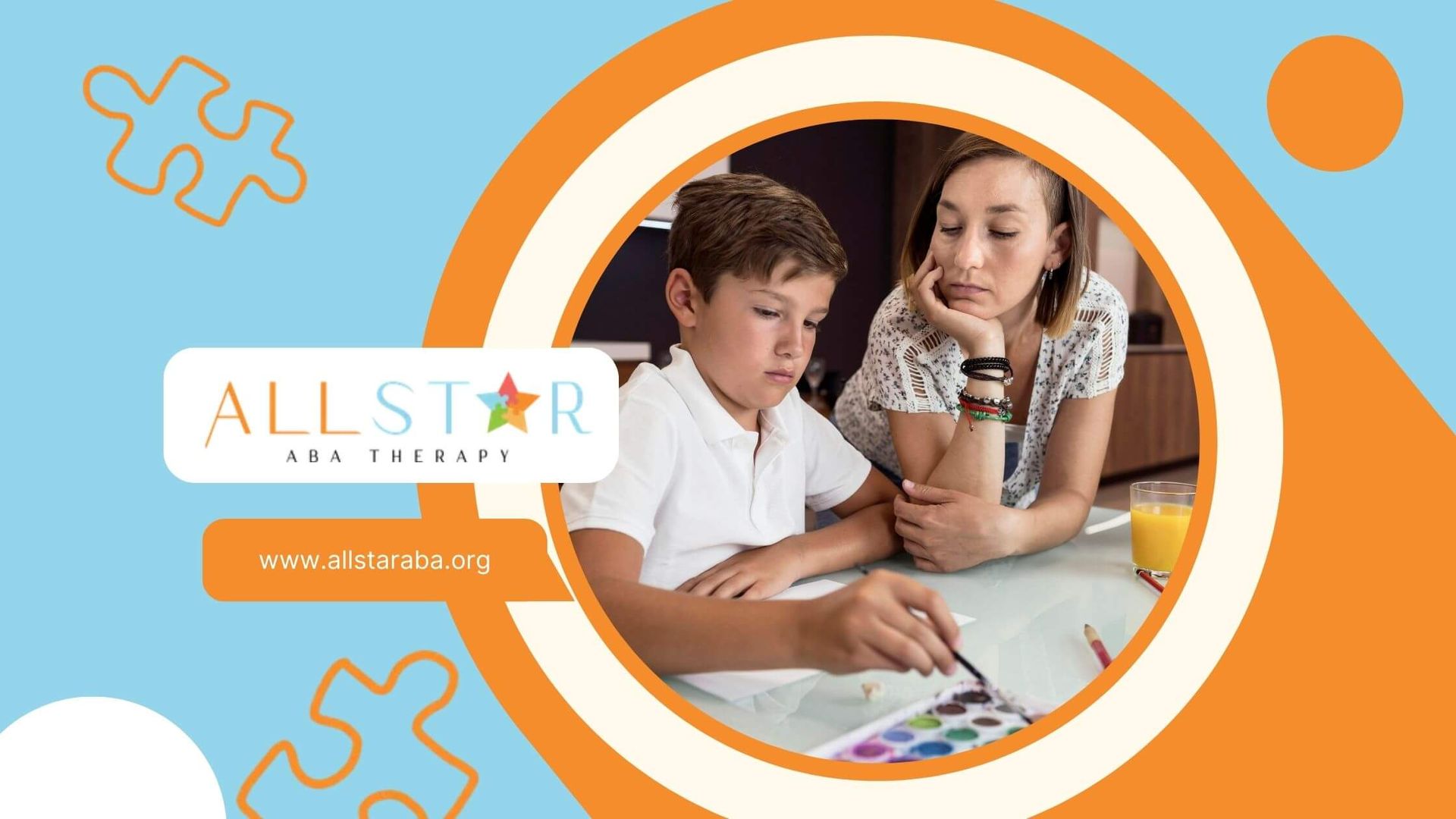New Paragraph
The Importance of ABA Therapist Data Collection
Importance of Data Collection in ABA
Data collection plays a crucial role in Applied Behavior Analysis (ABA) therapy. It allows ABA therapists to track progress, measure the effectiveness of interventions, and make data-driven decisions in therapy sessions. By collecting and analyzing data, therapists can gain valuable insights into the behaviors and responses of individuals receiving therapy, enabling them to refine and tailor treatment plans accordingly.
Tracking Progress in Therapy
Collecting and analyzing data is essential for tracking progress in ABA therapy. By consistently monitoring and recording the behaviors and responses of individuals, therapists can objectively measure their progress over time. This allows for a comprehensive assessment of the effectiveness of interventions and the identification of areas that may require further attention or modification.
Data collection provides therapists with quantifiable evidence of progress, which can be shared with clients and their families. It helps to establish a clear picture of the individual's journey and serves as a basis for celebrating achievements and setting realistic goals for future therapy sessions. Additionally, tracking progress allows therapists to evaluate the impact of specific interventions and make informed decisions about the continuation or modification of treatment strategies.
Utilizing Data for Treatment Decisions
In ABA therapy, data collection serves as a valuable tool for making treatment decisions. ABA therapists use the data they collect to analyze progress, make adjustments to interventions, and inform treatment decisions for the individuals receiving therapy. By closely examining the data, therapists can identify patterns, trends, and areas of improvement or concern.
Data-driven decision-making in ABA therapy involves systematically collecting and analyzing data related to client behaviors and responses. This process allows therapists to modify and refine behavior intervention plans in response to factors such as the nature of the behavior, individual abilities, and intervention goals. It ensures that therapy remains aligned with the client's current needs and progress, providing the best possible outcomes.
By utilizing data for treatment decisions, ABA therapists can make informed choices about intervention strategies, set appropriate goals, and customize therapy plans to meet the unique needs of each individual. This data-driven approach enhances the effectiveness of ABA therapy and increases the likelihood of achieving positive outcomes.
In summary, data collection is of utmost importance in ABA therapy. It enables ABA therapists to track progress, measure the effectiveness of interventions, and make data-driven decisions. By utilizing data, therapists can tailor treatment plans, set realistic goals, and provide personalized therapy that maximizes the potential for positive behavioral change.
Types of Data Collection Methods
In Applied Behavior Analysis (ABA) therapy, different types of data collection methods are utilized to gather valuable information on behavior. These methods enable ABA therapists to observe, record, and measure behavior, providing insights into the progress of therapy and guiding treatment decisions.
Behavior Information Gathered
ABA therapists collect data on various aspects of behavior to gain a comprehensive understanding of an individual's needs, progress, and response to interventions. The types of behavior information commonly gathered include:
- Frequency: This refers to the number of times a behavior occurs within a specific time frame. Tracking the frequency of a behavior allows therapists to assess its severity, monitor progress, and determine the effectiveness of interventions.
- Duration: Duration recording involves measuring the length of time a behavior lasts. This method is particularly useful for behaviors that are too fast or variable to count using frequency recording. Duration data provides insights into behavior patterns and helps therapists identify trends and make informed decisions about interventions.
- Latency: Latency recording focuses on measuring the time it takes for a behavior to occur after a specific event or cue. This method helps therapists evaluate response time, assess the effectiveness of strategies, and identify opportunities to reinforce desired behaviors.
- Antecedent-Behavior-Consequence (ABC): The ABC data collection method involves analyzing the events that occur before a behavior (antecedent), the behavior itself, and the consequences that follow. This comprehensive approach allows therapists to understand the cause-and-effect relationship of behaviors, identify triggers, and develop effective support plans.
Methods for Behavior Measurement
To collect and measure behavior data, ABA therapists employ various methods tailored to the specific behavior targeted, individual needs, and intervention goals. Some common methods include:
| Data Collection Method | Description |
|---|---|
| Frequency/Event & Rate Recording | This method involves counting and recording the number of times a behavior occurs within a specific time frame. It provides insights into behavior frequency and problem severity. |
| Duration Recording | Duration recording measures the length of time a specific behavior lasts. It helps capture behavior patterns and understand the duration of certain behaviors. |
| Latency Recording | Latency recording measures the time it takes for a behavior to occur after a verbal cue or event. It aids in evaluating response time and the effectiveness of strategies. |
| ABC (Antecedent-Behavior-Consequence) Recording | ABC recording involves analyzing the events before a behavior (antecedent), the behavior itself, and the consequences following the behavior. It helps identify triggers and develop effective support plans. |
By utilizing these data collection methods, ABA therapists can track progress, evaluate the effectiveness of interventions, and make informed decisions about treatment strategies. The data collected allows for personalized therapy plans and enhances communication with families, as discussed in the following sections. To learn more about ABA therapy data collection and interpretation, visit our article on ABA therapy data interpretation.
Benefits of Data-Driven ABA Therapy
Data collection plays a vital role in Applied Behavior Analysis (ABA) therapy, enabling therapists to make informed decisions and provide effective treatment for individuals with autism. By utilizing data-driven approaches, ABA therapists can create personalized therapy plans and enhance communication with families, resulting in more successful outcomes.
Personalized Therapy Plans
One of the key benefits of data-driven ABA therapy is the ability to create personalized therapy plans for each individual. By collecting and analyzing data on client behaviors and responses during therapy sessions, therapists can gain valuable insights into the specific needs, strengths, and areas of improvement for the individual. This data-driven approach allows therapists to tailor treatment strategies, goals, and interventions to the unique requirements of each client.
Through continuous and iterative data collection and analysis, therapists can track progress, identify effective strategies, and make adjustments as necessary. This personalized approach ensures that therapy is always aligned with the client's current needs and progress, maximizing the effectiveness of the treatment plan.
Enhanced Communication with Families
Data-driven ABA therapy also enhances communication between therapists and families. By sharing data on the child's progress, behavior patterns, and therapy decisions, therapists can provide families with a clear understanding of their child's development and the effectiveness of the treatment. This transparency helps families actively participate in the therapy process, fostering collaboration and trust between therapists, families, and individuals receiving therapy.
Through regular communication and data sharing, families can gain insights into their child's progress, identify areas of improvement, and actively contribute to the therapy goals. This collaborative approach ensures that therapy aligns with the family's priorities and empowers them to support their child's progress even outside therapy sessions.
By embracing data-driven ABA therapy, therapists can deliver personalized and effective treatment plans while fostering strong partnerships with families. The systematic collection and analysis of data enable therapists to make informed decisions, track progress, and adapt therapy strategies to meet the unique needs of each individual. Through enhanced personalization and improved communication, data-driven ABA therapy can lead to successful outcomes for individuals with autism.
Common ABA Data Collection Methods
To ensure effective ABA therapy, data collection plays a crucial role in measuring progress and making informed treatment decisions. Several data collection methods are commonly used in ABA therapy. In this section, we will explore three of these methods: frequency/event & rate recording, duration recording, and latency recording.
Frequency/Event & Rate Recording
Frequency/event & rate recording is a commonly utilized data collection method in ABA therapy. This method involves counting and recording the number of times a specific behavior occurs within a predetermined time frame. By tracking the frequency of a behavior, ABA therapists gain insights into behavior patterns, problem severity, and potential treatment effectiveness.
Frequency/event & rate recording provides measurable data that helps therapists understand whether a behavior is increasing or decreasing over time. It is particularly useful when behaviors occur at a moderate to high rate or when the focus is on reducing or increasing specific behaviors. This method can be applied in various environments, including therapy sessions, classrooms, or with specialist providers.
Duration Recording
Duration recording is another valuable data collection method used in ABA therapy. This method involves measuring the length of time a specific behavior lasts. It is particularly beneficial for behaviors that are too fast or variable to count accurately using frequency/event & rate recording.
By recording the duration of behaviors, ABA therapists can gain a comprehensive understanding of behavior patterns. This information aids in the development of effective treatment strategies and allows therapists to assess progress over time. Duration recording helps identify behavior trends, durations of problem behaviors, and potential improvements or setbacks.
Latency Recording
Latency recording is a data collection method that focuses on measuring the time it takes for a behavior to occur after a specific verbal cue or event. This method is particularly useful for assessing response times and understanding the effectiveness of strategies, such as teaching boundaries through communication responses.
By recording latency, ABA therapists can evaluate the effectiveness of interventions and determine whether specific prompts or cues are producing the desired response times. This data helps in refining treatment plans and implementing strategies that improve response times and overall behavior.
These data collection methods, including frequency/event & rate recording, duration recording, and latency recording, provide valuable insights into behavior patterns, treatment progress, and the effectiveness of interventions. By utilizing these methods, ABA therapists can make data-driven decisions to create personalized treatment plans and enhance communication with families. For more information on statistics in ABA therapy and outcome measures, visit our articles on ABA therapy research studies and ABA therapy outcome measures.
Ensuring Data Accuracy in ABA
Accurate data collection is of utmost importance in Applied Behavior Analysis (ABA) to ensure the effectiveness of therapy and make informed decisions for individuals with autism. ABA therapists rely on accurate data to assess progress, track behavior changes, and make necessary adjustments to treatment plans. In this section, we will explore the significance of accuracy in data collection and the importance of reliability and consistency in ABA.
Accuracy in Data Collection
Accuracy in data collection refers to the extent to which the recorded behavior represents the true value of the behavior. It is crucial for ABA therapists to ensure that the data collected during therapy sessions accurately reflects the targeted behaviors and their frequencies, durations, or latencies. However, measurement of accuracy can be prone to human error, which emphasizes the need for careful observation and documentation.
To enhance accuracy in data collection, ABA therapists should establish clear behavior definitions to ensure consistent understanding and measurement of targeted behaviors. This clarity helps minimize the chances of misinterpretation or misrepresentation of behaviors, leading to more reliable data. Additionally, involving multiple observers and comparing their recordings can help identify any discrepancies and ensure the accuracy of the collected data.
Reliability and Consistency
Reliability in ABA refers to the consistency of a measurement procedure, producing the same result each time it is administered. It is critical to measure behaviors consistently over multiple occasions to ensure reliable data. Fluctuations in data can occur due to factors such as guessing, environmental conditions, or the emotional state of the individual. Achieving reliability requires minimizing these sources of variability through careful measurement and consistent implementation of data collection protocols.
Consistency in data collection processes is vital to mitigate inaccuracies due to human error in ABA sessions. ABA therapists should establish clear guidelines for data collection, ensuring that all observers follow standardized procedures. This includes consistent use of measurement tools, uniform training for observers, and regular calibration sessions to maintain interobserver reliability. Monitoring techniques, such as interobserver reliability, where multiple observers independently measure the same behaviors, can help identify discrepancies and enhance the overall reliability of the collected data.
By focusing on accuracy, reliability, and consistency in data collection, ABA therapists can ensure that the information gathered during therapy sessions accurately reflects the progress and behavior changes of individuals with autism. This data serves as a valuable resource for making informed treatment decisions, personalizing therapy plans, and enhancing communication with families. ABA therapists should continuously strive to improve their data collection practices to provide the most effective and evidence-based therapy for individuals with autism.
Advanced Data Collection Techniques
In the field of Applied Behavior Analysis (ABA), advanced data collection techniques are employed to ensure accuracy and reliability in measuring behaviors. These techniques help ABA therapists make informed decisions and provide effective therapy to individuals. Two important techniques in advanced data collection are interobserver reliability and monitoring data accuracy.
Interobserver Reliability
Interobserver reliability is a monitoring technique used to assess the consistency and agreement between multiple observers in measuring the same behavior independently. This technique helps determine if the data collected is accurate by comparing the recordings of different observers. By ensuring agreement among observers, interobserver reliability helps mitigate inaccuracies due to human error during ABA sessions.
To establish interobserver reliability, multiple observers should be trained on the specific behavior definitions and measurement procedures. These observers independently collect data during ABA sessions and their recordings are compared for agreement. Consistency in data collection processes is vital to avoid discrepancies in the recorded information and enhance the reliability of the collected data.
Monitoring Data Accuracy
Accuracy in data collection is crucial in ABA therapy to ensure that the recorded behavior represents the true value of the behavior being measured. Human error can introduce inaccuracies in data collection, which can impact treatment decisions and the effectiveness of therapy. Monitoring data accuracy involves taking measures to avoid discrepancies in the recorded information.
To enhance data accuracy, ABA therapists should use clear and precise behavior definitions. This ensures that the behavior being measured is accurately identified and recorded. In addition, involving multiple observers can help enhance the reliability of the collected data by comparing recordings and identifying any discrepancies or inconsistencies.
By implementing interobserver reliability techniques and monitoring data accuracy, ABA therapists can ensure the quality and validity of the data collected during therapy sessions. Accurate and reliable data is essential for making informed decisions, assessing progress, and tailoring personalized therapy plans for individuals receiving ABA therapy.
Need Support?
We're Here to Help!
Our experienced team is ready to assist you. Reach out today to discuss how we can support your child's development and well-being.
Get started with expert ABA therapy today.








